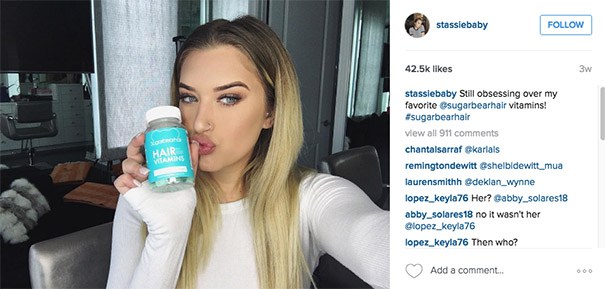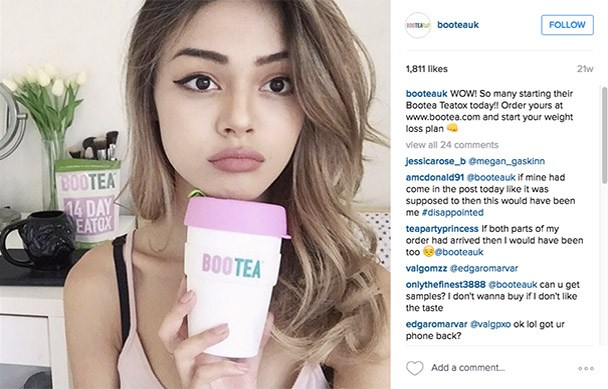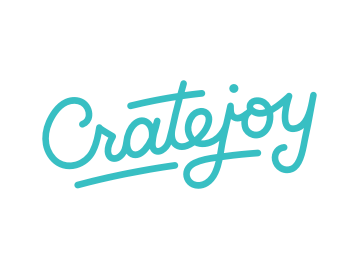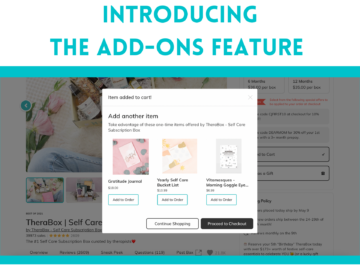As you may have heard, influencer marketing is a rising trend in advertising. It’s a form of marketing that takes you to the personal stage, putting you in front of your audience by aligning yourself with the people they love most.
Given the nature of this marketing type, which influencer is right for you depends heavily on your niche. It’s not as easy as choosing someone with a large following, arranging a shoutout, and calling it a day.
So: what is the “influencer economy”? And what exactly is an influencer?
Too basic? If you’re ready for the next step, jump ahead to Part 2: How to Create an Influencer Campaign.
Part 1: Influencer Marketing & How it Works
In short, when we say “influencer,” we mean someone who, due to their passion and expertise, has risen to cult celebrity status within a niche community on the Internet. That can mean anyone from people like Michelle Phan, who rose to fame by doing beauty tutorials on YouTube (and who now runs her own successful subscription box, Ipsy), to very popular food bloggers, to BookTube reviewers. (After all, YouTube is watched more than any single U.S cable network!) Thanks to millennials and the rapid democratization of celebrity, influencers have become ubiquitous.
These influencers exist for (almost) every niche. Be they a solo fashion aficionado, entrepreneurial guru, or a popular gamer on YouTube, influencers can get your product in front of an engaged, highly-targeted audience.

The process of influencer marketing is simple:
- Identify influencers in your market niche
- Get product (and/or payment) in their hands
- They create content that encourages social referral: the digital equivalent of word-of-mouth marketing.
Understanding Context with an Influencer
The degree of impact one social influencer wields varies from niche to niche.
In other words, influencers in one space may not be influencers in another, and if they promote something out of their niche, their audience may not take to it. Consider a beef jerky enthusiast with half a million subscribers on YouTube. A powerful social influencer by any standard, but probably not the best choice for a vegan subscription box!
This is one element that makes social influencers unique: what they “are” is constantly changing. Kissmetrics has even called them “changelings,” as they differ for each brand or market, while their function remains the same.
The distinction of context isn’t just semantics, either; in order for them to exert influence, they need to have real sway in a specific space. They need to be contextually relevant to the niche your business is servicing. When you partner with influencers who have real contextual significance with your target market, the value can be immense.
Why Working with a Social Influencer is Worth It
Word-of-mouth is relying on consumers to talk about a brand of their own volition, while influencer marketing is paying someone to do so.
Social influence behaves in much of the same way as word-of-mouth marketing, the most powerful form of marketing. (You see, 84% of people rely on recommendations from friends and family.) Some people see them as synonymous, but the difference is important to understand – both in how customers perceive it and how you have to approach it as a business.
Take it from Lynzee Jablanka from Everywhere Agency, which organizes influencer campaigns. “They’re not technically the same – but they do have similarities. Word of mouth is relying on consumers to talk about a brand of their own volition while Influencer Marketing [sic] is paying someone to do so. One of the major differences is the use of FTC disclaimers when you’re deploying influencer marketing campaigns – if you’re paying someone to speak on behalf of your brand, they have to disclose that they’re working with you by using #Ad or ‘This post was sponsored’ in their posts.”
Learn more: Read the FTC’s rules for native advertising, which often overlaps with influencer posts.
While you might not expect the same power of word-of-mouth marketing with influencer marketing, many influencers have demonstrated that their followers truly trust them, and brand recommendations benefit from that trust.
In short, when an influencer links to your business, that drives traffic and conversions. Below, MSLGroup and Social Chorus have put together an infographic demonstrating the same sentiment.
What’s most interesting about this is the results. Not only do the visitors pushed by influencers to a site show 16x the average engagement, but when the brand repurposes the content, the influencer’s content performs 35x better than the brand’s own content, and 10x as high when used in sponsored Facebook posts.
How Influencer Marketing is Being Done Today
The range of brands working with social influencers just keeps growing.
Following the formula outlined above, brands have begun to provide influencers with product and payment to share their experiences online.
Here are just a few examples:


Birchbox, Madewell, Johnnie Walker and Nature Box have done the same, targeting influencers in their own niches and creating brand-aligned campaigned.
For one post, NatureBox had an influencer share a photo of their children enjoying some of their favorite NatureBox snacks.
In another example, Sazan Barzani, a fashion and beauty blogger, shared her experience using a L’Oreal hair care product that she was “testing.” Over the course of the video, the experience feels authentic, though she clarifies in the beginning that the video is sponsored.
In all cases, brands and their influencers work to develop a narrative that feels like an organic, authentic experience shared by the influencer. The end result? The story resonates with the audience and the brand successfully aligns itself with their interests, capturing new fans and purchases in the process.
New Solutions Are Emerging for Influencer Marketing
The way brands do this is also becoming easier.
Platforms, agencies, and curated networks of influencers are becoming more numerous, and venture capital is being invested into this space.
TapInfluence, an influencer marketing automation platform, just announced a $14 million funding round. Captiv8, a tool that analyzes your social profiles and recommends influencers, announced a $2 million funding round only days before. Both companies make it easier for brands to connect to networks of social influencers.
Using Influencer Marketing with Your Own Business
When it comes to implementing an influencer marketing campaign with your own business, there are two routes to take:
- The one described above, using tools or agencies to help you along the way, or
- A more manual, “scrappy” process, where you identify, vet and monitor success on your own.
Resources: Download our free influencer marketing spreadsheet at Cratejoy’s sister site Subscription School.
What more information on how to organize your first campaign? We’ll cover both of these strategies in Part 2 of the guide.




